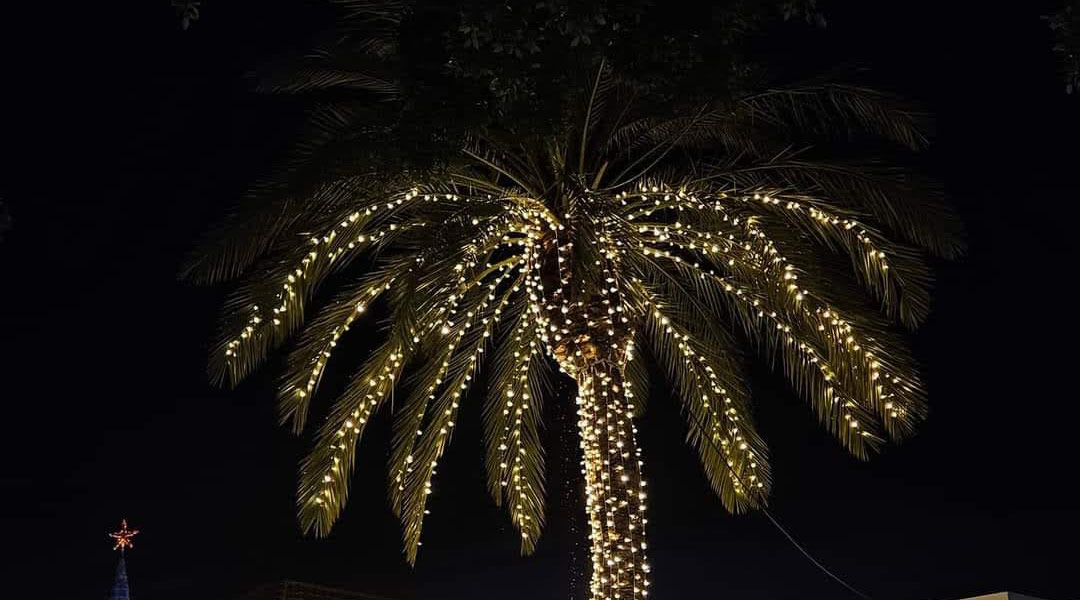
Table of Contents

Christmas on the Canary Islands – the Advent season
On the Canary Islands – as in northern Europe – the first place you notice that the Advent season is approaching is of course in the supermarket. By mid October the typical Christmas delicacies suddenly appear. And while you’re still out and about in shorts and flip-flops, you can start thinking about Christmas
From beginning of december the villages and cities are decorated with shining christmas lights. Glowing decorations adorn streets, palm trees, lanterns and squares. The islands shine in colorful Christmas lights every evening. And you will find small and large nativity scenes (some made of sand, some made with quite a sense of humor) set up in many places.
Christmas on the Canary Islands – Typical Christmas Delicacies
In Germany, speculoos, gingerbread, mulled wine and punch are virtually inseparable from the Advent season. On the Canary Islands turrones and truchas are extremely popular sweets at Christmas.

Turrón has its roots in Arabia and is made from almonds, honey, sugar and egg. What you might mistake as chocolate in the supermarket is actually Turrón, but packaged it looks quite similar to chocolate bars. Turrón is available in different varieties: with chocolate, fruit, coconut and much more. You can also choose between soft and hard turrón, as this typical Spanish Christmas sweet has already caused many toothaches…
Another typical Christmas treat on the Canary Islands are the “truchas de batata”. These are small sweet pastries filled with roasted sweet potato or pumpkin, flour and cinnamon.

Christmas on the Canary Islands – The Christmas Days
Even though in Spain – and on the Canary Islands as well – Gift-giving is only at January 6th when the three kings bring the presents, Christmas is celebrated on 24th and 25th of December. The 24th of december – noche buena – is no public holiday and supermarkets and many shops might be open until about 6 pm. In the evening many families meet at home for a festive dinner to celebrate the beginning of Christmas. At midnight the churches open their doors for the “misa de gallo” which marks the start of the Christmas celebrations.

Especially on the Canary Island the family is the center of attention during the holidays. Many Canarios, who moved to the Spanish mainland for their job, come back to the islands to enjoy the time with their families and friends.
Christmas Day is a public holiday and supermarkets and shops will be closed in most places – even in touristic hotspots.
Canarian Christmas music – Una sobre el mismo mar
This Christmas “hym” of the canaries was newly edited and recorded in 2020 to include the 8th canarian island – la Graciosa. Benito Cabrera wrote the song in the 1990s and ever since it belongs to Christmas on the Canary Islands like the trip to the beach. If you want to listen to even more Canarian Christmas music you can find a playlist of Canarian Villancios (and other typical Spanish Christmas songs) here on Spotify.

December 28th – day of the innocent children
What April 1st is for many others, December 28th is for the Spanish. On this day, you shouldn’t believe every story you are told, because you might just be taken for a ride. People celebrate this day with a lot of humor and the occasional joke at the expense of friends, relatives and unawares.

New Year’s Eve
On the Canary Islands many spend the transition into the new year in the Canary Islands with friends and families. There will be a big party with fireworks and live music in Corralejo, but most restaurants close early and you will hardly find any private fireworks.
Instead of fireworks, 12 grapes have to be eaten at midnight: One grape with every chime of the bell. This is supposed to bring good luck for the new year.
And just to make sure you could also put on red underwear to ensure luck, passion and success for the coming year 😉

The Three Kings
The Christmas festivities on the Canary Islands end with the day of the three kings on January 6. On that day (actually during the night before) the three kings finally bring the presents! (There might have been a small present from Santa on December 25, too.)
Before, Young and old can send their wish lists to the kings in specially set up letterboxes so that no wish would be lost. The kings arrive on the islands in the evening and are welcomed with grand parades on the bigger islands. To the more remote places the kings like to drive to in convertibles and are greeted by waving children and adults who were waiting at the roadside.
On January 6th, the gift-giving ceremony takes place in the morning. The night before many children leave small sweets for the kings on the doorstep (similar to St. Nicholas).
The Roscon de Reyes – a sweet wreath, often filled with marzipan, cream or pudding – is a must at the family dinner in the evening. But the most important thing here is the little royal figure hidden in the cake. Whoever finds this figure receives a paper crown and becomes king.

So, despite the summer temperatures, Christmas is celebrated extensively on the Canary Islands. It may be a little different to what you’re used to at home, but that’s what makes Christmas on the Canary Islands so special. And jumping into the sea to surf or swim on Christmas Eve also has its own special charm!






